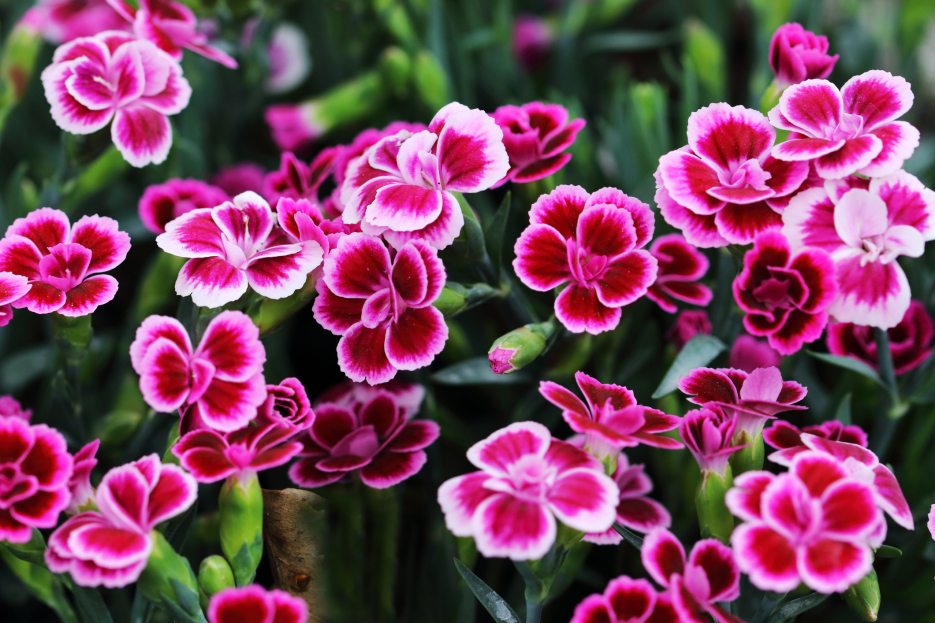
Dianthus, often known as carnations or pinks, are popular flowering plants that can make a colorful and fragrant addition to your indoor garden. Known for their vibrant blooms and delightful scent, Dianthus houseplants are an excellent choice for those who want to bring a little burst of color to their homes. With the right care, they can thrive indoors and bloom beautifully year-round. Here’s a guide to help you keep your Dianthus houseplants healthy and blooming.
Dianthus plants thrive in bright, direct sunlight. For the best growth and abundant flowering, place your Dianthus near a south or west-facing window, where it can soak up plenty of sunlight throughout the day. Aim for at least 4-6 hours of direct sunlight each day to encourage strong blooms. If your plant doesn’t get enough light, it may produce fewer flowers and become leggy.
In lower-light conditions, Dianthus can survive, but it may not bloom as prolifically. If growing indoors during the winter months when light levels can be lower, supplementing with a grow light can help your Dianthus thrive.
Dianthus houseplants have moderate watering needs. They prefer to have their soil kept moist but not soggy. Water your plant when the top 1-2 inches of soil feel dry to the touch. Ensure that the pot has drainage holes to allow excess water to escape, as standing water can lead to root rot.
During the growing season (spring and summer), you may need to water your dianthus more frequently, but reduce watering in the fall and winter when the plant’s growth slows down. Be careful not to overwater, as this can lead to fungal issues and other problems.
Dianthus plants prefer well-draining soil that mimics their native growing conditions. A standard potting mix combined with a small amount of sand or perlite will provide the drainage they need. This is important because Dianthus plants are susceptible to root rot if their roots are kept too wet for too long.
When choosing a pot, make sure it has drainage holes to allow proper water flow and prevent water from collecting at the bottom. Repotting your Dianthus every 1-2 years can help refresh the soil and give the plant more room to grow.
Dianthus plants thrive in cool to moderate temperatures, making them ideal for indoor spaces with temperatures between 60-70°F (15-21°C). While they can tolerate brief periods of higher temperatures, they generally prefer cooler indoor environments.
Unlike many tropical plants, Dianthus does not need high humidity and does well in average household humidity levels. However, they should be protected from drafts, as cold winds or sudden temperature changes can stress the plant and cause it to stop blooming.
Dianthus plants are light feeders and don’t require frequent fertilization. To encourage healthy growth and vibrant blooms, you can feed your dianthus with a balanced, water-soluble fertilizer diluted to half strength every 4-6 weeks during the growing season (spring and summer). Avoid fertilizing during the fall and winter when the plant is dormant or resting.
Over-fertilizing can lead to excessive foliage growth with fewer flowers, so it’s important to keep the feeding schedule moderate.
Pruning is an important part of Dianthus care, as it helps maintain the plant’s shape and encourages fresh, new growth. After the plant has finished blooming, remove the spent flowers to encourage continuous blooming and improve the plant’s appearance.
To keep the plant looking tidy and compact, you can also trim back any leggy or overgrown stems. Dianthus plants benefit from a bit of a trim after their blooming period, which helps to prevent the plant from becoming too unruly.
Dianthus plants are generally considered non-toxic to pets, making them a safe option for households with cats and dogs. However, it’s always a good idea to discourage pets from chewing on your plants, as even non-toxic plants can cause digestive upset if ingested in large quantities.